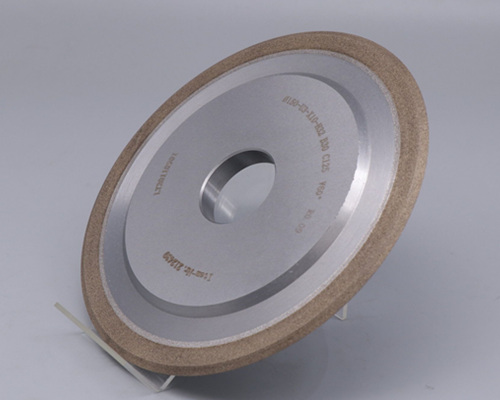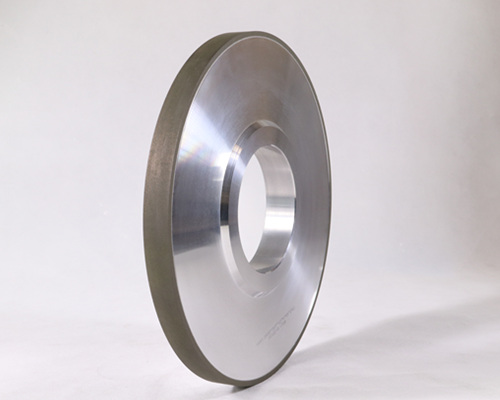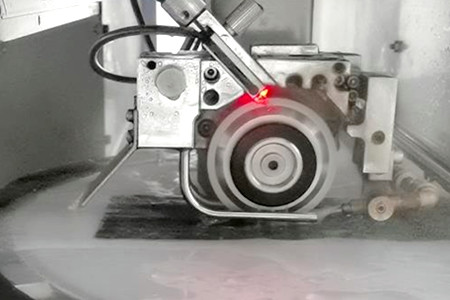Stainless steel is widely used because of its good corrosion resistance, but there are many types of stainless steel, 3 series, 4 series, 6 series, each series will be subdivided according to the added elements, 304, 316, 420, 660, etc...
316 stainless steel, also known as A4 stainless steel, contains 16% chromium, 10% nickel, and 2-3% molybdenum. The material elements can resist chloride corrosion, so it’s more corrosion-resistant and heat-resistant than 304, and it’s relatively less easy to process.
In terms of grinding, the following grinding difficulties can be sorted out:
■ Easy to cause grinding heat
Stainless steel has large plastic deformation and low thermal conductivity. Under the high-speed friction, it’s easy to increase the grinding temperature, cause surface burns, and reduce processing accuracy.
■ Abrasive is easy to blocked
Stainless steel is tough, and the chips are sticky and sheet, which are easy to stick to the surface of the grinding wheel. When the surface of the grinding wheel is blocked, the cutting force will decrease, lead to the temperature rise.
■ High frequency of dressing
As mentioned above, stainless steel chips are viscous and will cause sticking. In order to keep the cutting force , the grinding wheel needs to be dressed frequently, which will increase the processing cost and reduce the efficiency.
In order to solve the above problems, we must start with the grinding wheel used. If the abrasive is easy to blocked, the selection of the grinding wheel can follow these points for reference:
■ High heat dissipation
The grinding wheel mainly relies on pore to dissipate heat. The heat dissipation and chip removal of the grinding wheel are determined by the distribution and size of the pores. The grinding wheel with evenly distributed pores dissipates heat evenly and can greatly reduce the grinding heat. The effect of improving the surface precision can be achieved after the temperature is lowered.
■ High strength bond
The strength of the bond determines grinding wheel’s life and cutting force. The harder the grinding wheel, the better the life. However, if it’s too hard, the abrasive will not fall off normally, which will affect the cutting force. If it’s too soft, the abrasive will fall off frequently, and the sand will scratch the work piece. So how to adjust the hardness of the grinding wheel to suit your grinding method and work piece is important.■ Choose abrasives with high cutting force
Abrasives with high cutting force are important for grinding stainless steel. Because stainless steels are tough, they require greater cutting force for complete removal. Most recommend GC abrasives for grinding. They have high hardness and brittleness and can be sharpened by self-sharpening. As abrasive fall off, it takes away the heat and keep stable and sharp.
In summary, because 316 stainless steel has high toughness, high wear resistance and corrosion resistance, it is easy to cause sticking, blocking and grinding heat for grinding. The solution is to choose abrasives with high self-sharpening and high cutting force, and the most important design of pore as a strong backing for abrasives. Shengyao carefully selected a special grinding wheel with large pore for the above characteristics, [PTII dimensional gas grinding wheel, which has all the above characteristics, and the quality of grinding wheel is stable. At the same time, it has strong heat dissipation and cutting force, and has both surface roughness and cutting characteristics. I hope the above information can solve your problems.
Why does grinding stainless steel scratch easily?
(1) The size of the abrasive grains of the grinding wheel is uneven
The largest and smallest abrasive grains in the grinding wheel may have several times the difference in grain size, and the larger abrasive grains are more prominent, which will cause uneven depth of the ground workpiece.
(2) Grinding heat causes excessive cutting and debris sticking
Stainless steel with a softer texture is prone to thermal expansion due to grinding, and the amount of cutting is relatively large, resulting in deep grooves on the workpiece. The high temperature will also melt the debris and adhere to the surface of the grinding wheel or workpiece, which will easily cause scratches during grinding.
(3) Scratched by debris from abrasive particles
If the bonding force of the grinding wheel is uneven, a large piece of sand may fall off during the grinding process. If it is not removed quickly and it stays on the surface of the workpiece or the grinding wheel, it will form serious scratches.
When grinding stainless steel, white fused alumina(WA) is generally used. White corundum grinding wheel has good cutting performance and good self-sharpening. When grinding acid- resistant stainless steel, grinding scratches can be reduced. Especially monocrystalline fused alumina with large aperture has good application effect in production.
Because CBN has high hardness, grains easily wear, and good chemical stability, and it does not have a chemical affinity with iron group elements, therefore CBN grinding wheels are not blocked easily when grinding. Grinding stainless steel with CBN grinding wheel has the best effect.


